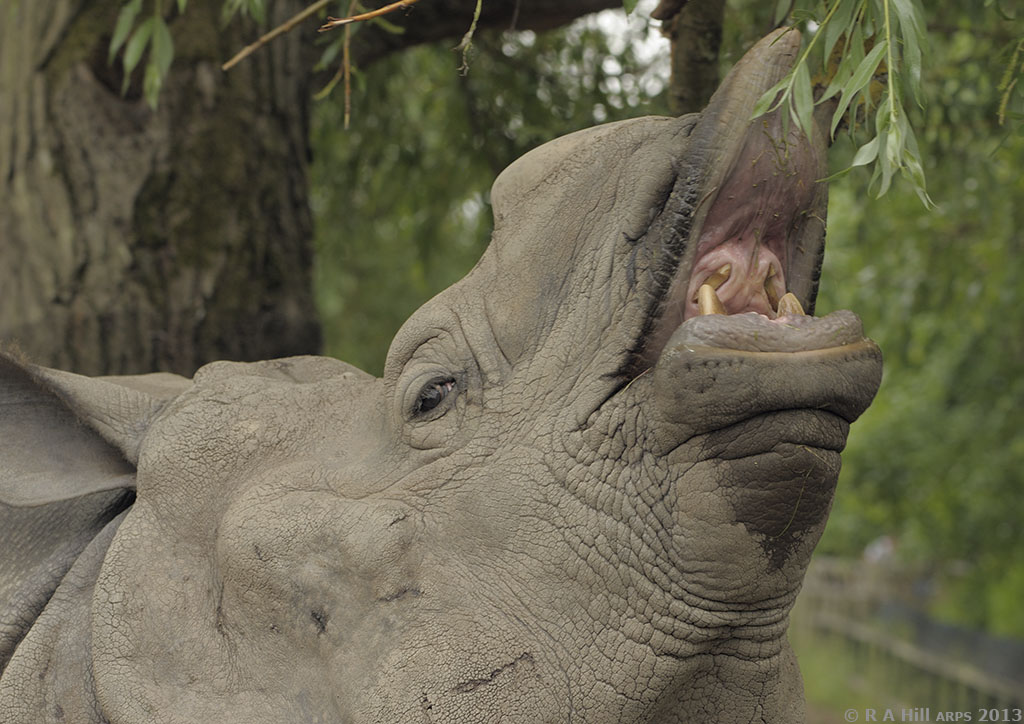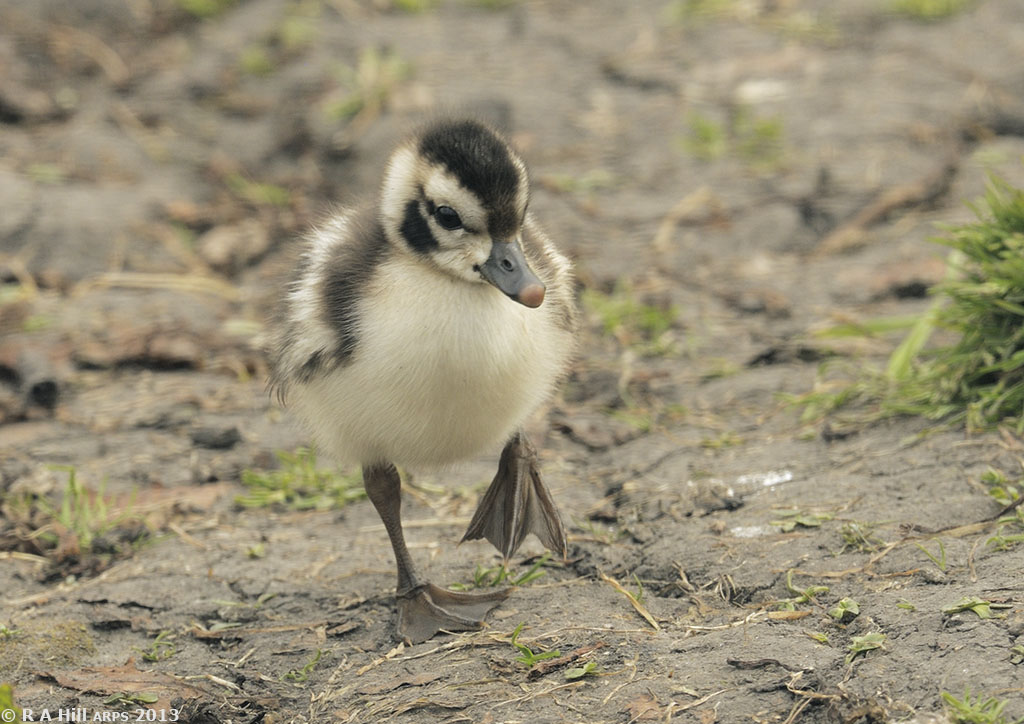A HAPPY WANDERER
16th June 2013
When I visit a zoo, I may have a specific target in mind, but often I just wander round without much planning: on the other hand, as I visit my favourite zoos quite frequently I do know a little about the most likely times and places for photo opportunities. However you should always be prepared to learn by watching for new opportunities.
Sunday June 16th did not have a brilliant weather forecast, but cloudy skies can work well for photography and I hoped to get a chance to see the new tiger cubs born on the 3rd of June.
I always start at the Islands in Danger building, as my favourite Boelen's pythons are most active early in the day. After working out with a few fairly unsuccessful shots, I made my way to the tigers before things got too busy.
Kirana, the female Sumatran tiger, had taken given birth in her indoor quarters; but she had followed the pattern of her previous two litters and moved the cubs to her favourite den, under a wooden platform quite near to both the ground level viewing window and the high level viewing platform for visitors. She seems content to let Fabi, their father, stay in the same enclosure provided that he soesn't get too close to the den. Unfortunately being quite near to visitors does not mean that the cubs are easy to see. The angle of the platform and the thick planting of the enclosure means that viewers and photographers are very restricted in what they can see. I was lucky to get a few shots with my 500mm as one of the cubs was crawling at the edge of the den while Kirana was feeding the other. This is the best one.
I returned to the tiger enclosure several times during the day, without seeing the cubs again.
On my last visit I saw the two banteng cows in their new enclosure near the old entrance (the former wapiti/bongo paddock). This time they had managed to move the bull in with them and both cows had given birth to calves as well. The bull is an impressive animal.
Both the Javan banteng and the Sumatran tigers are due to be moved into the new Islands exhibit which is now being developed south-east of the current zoo boundary.
The zoo has had a pair of Linne's two-toed sloths in the Jaguar house for about a year now. I haven't been really happy with any of my sloth photos so far, but I keep trying. The light indoors is not really good enough to use my 500mm lens, but I tried as an experiment: although this shot needed some work with Capture NX2 and Photoshop and there are some out of focus twigs which degrade the image, I like the pose and the countershading - so I rate it a qualified success.

At Realm of the Red Ape (generally known as RotRA) the Sumatran orang utans were not very visible, but the Bornean group was showing well. They had just been given access to their second outdoor cage, which had been temporarily occupied by the small-clawed otters. This had allowed the shrubs to put on some growth, so the orangs had plenty of pruning to do - they are remarkably destructive. Old Martha was happily consuming a small bamboo - she is about 48 and one of the oldest orangs in the UK. She sometimes appears rather stiff, but she is still active and climbs well.

Martha lives with her daughters Sarikei and Leia, and her 4 year old grandchildren Iznee and Latifah who are delightfully active. Tuan, the adult male cannot be mixed with the group and he is normally kept off-show. At the moment Chester are also boarding Blackpool Zoo's group of Bornean orangs while their house is being rebuilt, but they have also been off-show when I have visited. I was pleased to take the portrait of Martha, although I wish it were a little sharper; the one of Latifah below is better, because I was able to get the lens perpendicular to the window that I was shooting through.

There is no problem with glass at the Chimp Island, a group were close to the moat near RotRA. This is Carlos, a subadult male who is one of the youngest in the group.

When I was a boy, there were three ape islands just covered with grass. Now there is one large island furnished with telegraph poles and nets for climbing and thickly planted with shrubs. This doesn't just look attractive, it gives the chimps opportunities to join up in small groups or to stay away from each other and to find interesting plants to investigate. This older lady, who might be Heidi (but I'm not sure), was enjoying the flowers and young leaves of a wild rose.

My path went from the chimps, past the macaws and through the Tropical House. I always check the tuataras near the door by the main entrance. They are great rarities in zoos, and although they not particularly spectacular or active, they are fascinating. One of the females was posing at the mouth of her burrow.
In the afternoon the light is favourable in the Tsavo aviary. The black-headed village weavers are the most obvious birds. The males are building their nests, displaying or destroying other nests. Females are less flamboyant but they watch what is going on and flutter their wings to encourage males which catch their eyes.

The Indian rhinos were active as I headed back to the tigers again. Asha was in the pool and the bull Beni was showing off close to the ditch. I switched to my 105mm lens for this shot as he sampled a few willow leaves. Impressive teeth!

Finally as the zoo went quiet at closing time, I did a quick tour of the aquarium. I have never seen one of the young Annam leaf turtles out of the water before, so I was very pleased to catch this pose which was perfect for my 105mm macro. The zoo has done well with this species and several other very rare terrapins, most of which are off-show. The zoo is planning a new turtle exhibit too.

























